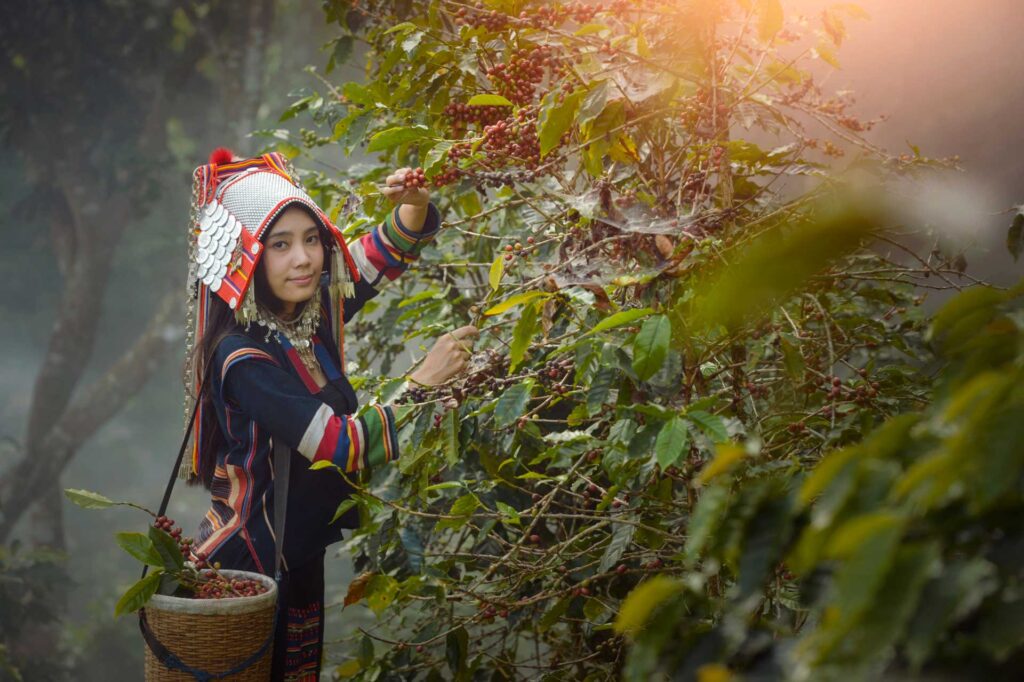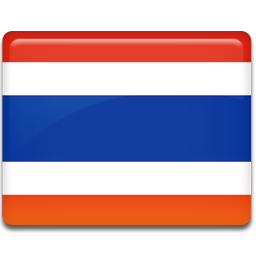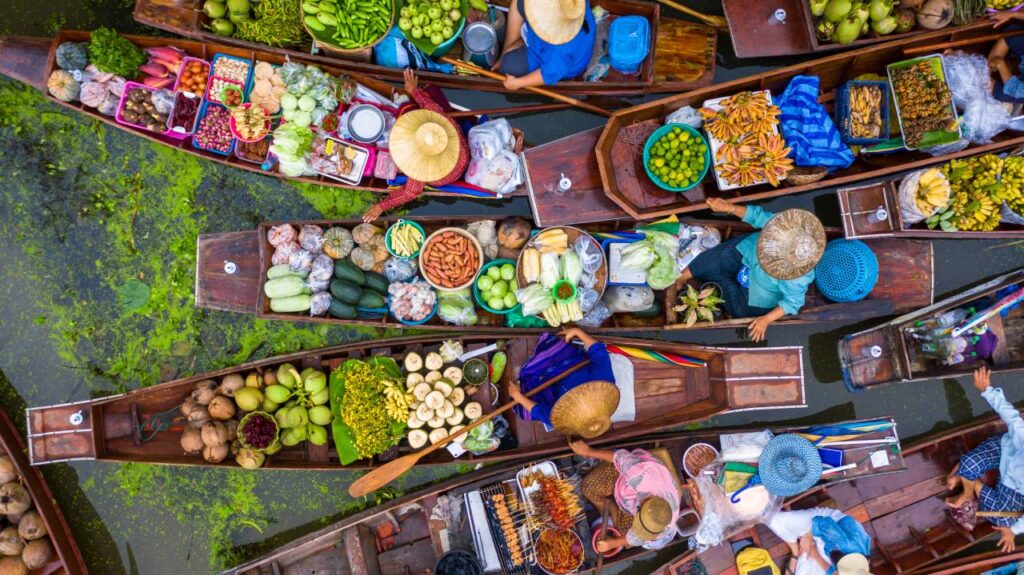Bangkok
When you travel around Bangkok, a cruise
on the Chao Phraya, a visit to a floating
market, or an exploration of the cities
canals (khlongs) are a must. Thailand’s
Grand Palace is situated in the heart of
Bangkok, located nearby some of the most
spectacular temples, including the Temple
of the Emerald Buddha (Wat Phra Kaeo),
the Temple of Dawn (Wat Arun), and Wat
Pho, which features an enormous reclining
Buddha.
Chiang Mai
Surrounded by mountains and lush countryside,
Chiang Mai is much greener and quieter than the
capital. The charming city features centuries-old
pagodas and temples next to modern convenience
stores and boutique hotels. Outside of the city
tourists can discover the intriguing diversity
among ethnic tribes, cooking classes, outdoor
activities, handicrafts workshops, various cultural
performances, and breathtaking scenery.
Chiang Rai
A quieter neighbour of Chiang Mai,
Chiang Rai is a land of outstanding
natural beauty, where visitors can visit
remote hill tribes, spot exotic wildlife,
and check out the golden triangle
– the former centre of the world’s
opium trade. Chiang Rai is a traveller’s
paradise, endowed with abundant
natural attractions and antiquities.
Phuket
Spectacular scenery, stunning tropical sunsets
and warm blue sea await you in one of Asia’s most
popular beach destinations. The island’s long
history has influenced Phuket with its diverse
ethnic groups, culture, architectural influence,
and fine cuisine. This fun island provides an
unbeatable combination of perfect silky soft white
palm-lined beaches, superb hospitality and great
value accommodation, not to mention an active
nightlife.
Koh Samui
Koh Samui is the third largest island and
is easily accessible, features beautiful
beaches, plentiful activities and caters
to visitors on any budget. Visitors can
participate in cooking courses, yoga
instruction, Muay Thai training, scuba
diving, and even golf. Ko Samui has
retained much of its natural beauty while
offering nearly every imaginable activity or
service for the ultimate beach holiday.
Sukhothai
Founded in the 13th century, Sukhothai, which literally means “Dawn of Happiness”, was the first truly independent Thai Kingdom and enjoyed a golden age under King Ramkhamhaeng, who is credited with creating the Thai alphabet. The superb temples and monuments of this great city have been lovingly restored, and Sukhothai Historical Park, a UNESCO World Heritage Site, is a must-see for all travellers, particularly in the evening when the graceful Buddha images are illuminated by lights
Ayutthaya
Just 76km north of Bangkok, the ancient city of Ayutthaya, or Phra Nakhon Si Ayutthaya, the Thai capital for 417 years, is one of Thailand’s major tourist attractions. Many ancient ruins and art works can be seen in a city that was founded in 1350 by King U-Thong when the Thais were forced southwards by northern neighbours. Ayutthaya is one of Thailand’s historical and majestic highlights. The capital of Thailand, then known as the Kingdom of Ayutthaya, Phra Nakhon Si Ayutthaya was a glorified as one of the biggest cities in Southeast Asia and a regional power for 417 years. The Kingdom of Ayutthaya reached its apex in terms of sovereignty, military might, wealth, culture, and international commerce in the 16th century, when the Kingdom’s territory extended into and beyond present-day Laos, Cambodia, and Myanmar. Ayutthaya had diplomatic relations with Louis XIV of France and was courted by Dutch, Portuguese, English, Chinese and Japanese merchants.
Pattaya
One of Thailand’s most popular beach resorts. Now a family-friendly destination, this area has long been well known for its vibrant nightlife and beautiful beaches. Pattaya may not be idyllic but it certainly makes up for it with a wide variety of activities, accommodation and nightlife venues. Pattaya is a popular beach resort on the Gulf of Thailand just 150 km. southeast of Bangkok – a mere two-hour drive. Pattaya’s pulsating nightlife is well known, but local authorities have, in recent years, improved the quality of the beaches and reinvented the resort as a more family-friendly destination.
Koh Chang
Also known as Elephant Island, Koh Chang is popular with those wanting to dive at the Mu Ko Chang National Marine Park and explore the underwater coral gardens. This tiny island is also popular with tourists looking for a great place to meet other travellers, relax and have fun.
With no less than 50 offshore isles, Koh Chang boasts the finest red gems, sweet Rakam fruits, indigenous dogs, the historic Koh Chang Naval engagement, and is the eastern-most province in Thailand. Ko Chang (Elephant Island) is Thailand’s second largest island and the primary destination for those visiting Ko Chang Marine National Park, which includes dozens of unspoiled islands. Located in Trat Province, about 300 kilometers east of Bangkok and not far from the Cambodian border, Ko Chang is 70% covered by unspoiled rainforest and the island’s permanent residents are only gradually becoming more involved in tourism as development has increased in the past decade.
Hua Hin
A quiet and relaxing seaside resort ideal for family vacations, a reasonable 2.5 hours drive down from Bangkok. Besides just sunbathing, snorkelling and swimming, visitors can also enjoy golf, spas, caves, peaks, waterfalls, shops, seafood and nearby national parks.
Hua Hin, one of Thailand’s premier beach resort towns on the Gulf of Thailand, is less than 200 km south of Bangkok, making it one of the most popular weekend getaway destinations for city residents. A resort equally popular with young couples and families, tourists and Thais, Hua Hin is also the location of the King of Thailand’s summer palace, Klai Kang Won, “Far from Worries.” Hua Hin features a beautiful, powdery sand beach, numerous seaside seafood restaurants, a lively night market, numerous beach activities, and some great inland activities, not least of which is golfing at some of Thailand’s most renowned courses.
Koh Phangan
Famous for the Full Moon Party which is held on full moon night every month, this world-famous beach party brings thousands of party lovers to the island. Koh Phangan also has tranquil places for visitors to enjoy nature; you can relax under the share of coconut trees on white sandy beaches and absorb the spirit of nature.
Blessed with some of Thailand’s most spectacular beaches and a still unspoiled interior, Koh Phangan is an ideal destination for those looking to party, relax, or engage in wellness programs, such as a yoga or meditation retreat. Koh Phangan is a large island off the east coast of Surat Thani province in the Gulf of Thailand. Koh Phangan is located about 100 km off shore and about 15 km north of Koh Samui.






